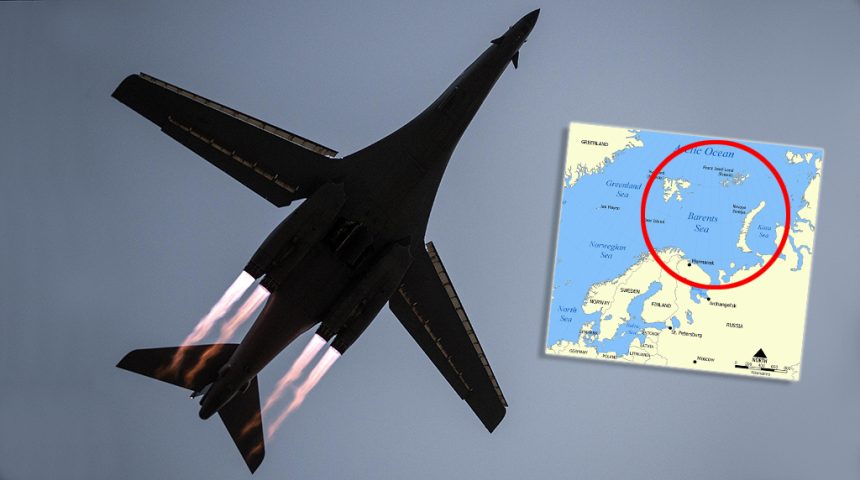The U.S. Air Force B-1 Lancer bombers have launched the first deterrence patrol from Orland Air Station to the eastern Barents Sea, where they integrated with RNoAF F-35A.
On Feb. 26, 2021, the U.S. Air Force B-1 Lancers from the 7th Bomb Wing at Dyess Air Force Base, Texas, deployed to Norway for a BTF (Bomber Task Force) have launched their first mission.
According to the U.S. Air Force, two B-1s participated in a local sortie where they conducted tactical integration with a Norwegian F-35A and Norwegian naval assets in the eastern Barents Sea. This is extremely interesting, as the area of operations, over international waters, was not far from Severomorsk, Russian Navy Northern Fleet. Those are waters, which have been dubbed “Russia’s Naval Backyard“, are of strategic importance for Russia to ensure the survivability of its second-strike nuclear assets, the ballistic missile submarines based with the Northern Fleet.
“It’s fitting we got to kick this BTF off with a mission that highlights our ability to integrate with our Norwegian allies across multiple domains,” said Gen. Jeff Harrigian, U.S. Air Forces in Europe-Air Forces Africa commander in an official USAF release. “This type of interoperability is especially critical in the Arctic where no one nation has the infrastructure or capacity to operate alone.”
As explained in the article published when the deployment was announced, while the strategic bomber missions have provided theater familiarization for aircrew members and opportunities for U.S. integration with NATO allies and regional partners since 2018, the current “Arctic Bone” deployment, marks the first time U.S. bombers operate out of Norway. Indeed, on May 20, 2020, two B-1B Lancers from the 28th Bomb Wing, Ellsworth Air Force Base, South Dakota, conducted a mission to the Nordic region. That mission, one in a series of long-range strategic Bomber Task Force missions to Europe, was worth of note for at least a couple of interesting details: first, it marked the first time B-1s flew over Sweden to integrate with Swedish Gripens while conducting close-air support training with Swedish Joint Terminal Attack Controller ground teams at Vidsel Range; second, the B-1s integrated with Royal Norwegian Air Force F-35s to fly tactical sorties and conduct a low-approach over Ørland Air Station, Norway, the home of the RoNAF’s recently operational F-35 fleet.
B-1B Bombers from Dyess Air Force Base @usairforce
landed at Ørland Airbase today. This is an important training mission for the Norwegian Armed Forces together with allies.@US_EUCOM @NATO_AIRCOM @usembassyoslo pic.twitter.com/e89iX2FUAD
— Royal Norwegian Air Force (@Luftforsvaret) February 22, 2021
The presence of the U.S. bombers in that area is going to increase tension in the area.
A few days ago, as the B-1s arrived at Orland Air Station, the Russian Northern Fleet’s missile cruiser “Marshal Ustinov” was reported to be close to Norway’s border, outside Grense Jakobselv: no Russian warship was monitored so close to Norway’s maritime border in the Varanger fjord anytime in post-Soviet history, the Barents Observer reported. Earlier this month, two Russian Tu-160 Blackjack strategic missile carriers performed an unusual mission over the Barents, Greenland and Norwegian seas.
Update: interestingly, the U.S. Air Force has changed the location where the mission was flown from the “eastern Barents Sea” to the “Norwegian Sea”.
Why did USAF change the location of B-1B first mission out of Norway from the eastern Barents Sea to the Norwegian Sea? CC @TheAviationist pic.twitter.com/J3XX2na7A3
— Ryan Chan 陳家翹 (@ryankakiuchan) February 26, 2021









